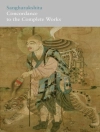The Italian (1797) is a novel by Ann Radcliffe. Radcliffe’s final novel is a tragic story of romance and mystery set in Naples during the brutal years of the Holy Inquisition. Published in the aftermath of the French Revolution, the novel investigates the issues of religion and class that had inspired the Republican cause, changing Europe and the world forever. Considered an essential work of Gothic fiction, The Italian is an early example of her prowess as a leading novelist of suspense and the supernatural. A young Englishman meets a friar while touring Naples. At the church of Santa Maria del Pianto, he notices a shadowy stranger sitting near the confessional. When the friar informs him that the man is an assassin, his friend, an Italian, offers to send him the narrative containing the man’s shocking confession. Back at his hotel room, he reads a story beginning in 1758 at the church of San Lorenzo, where a young nobleman falls in love with a beautiful orphan named Ellena. When Vicentio informs his mother, the Marchesa, of his desire to marry the girl, she conspires with the wicked Father Schedoni to change her son’s mind. Soon, Ellena disappears, sending Vicentio di Vivaldi on a quest to save her life. This edition of Ann Radcliffe’s The Italian is a classic of English literature reimagined for modern readers.
Since our inception in 2020, Mint Editions has kept sustainability and innovation at the forefront of our mission. Each and every Mint Edition title gets a fresh, professionally typeset manuscript and a dazzling new cover, all while maintaining the integrity of the original book.
With thousands of titles in our collection, we aim to spotlight diverse public domain works to help them find modern audiences. Mint Editions celebrates a breadth of literary works, curated from both canonical and overlooked classics from writers around the globe.
Om författaren
Ann Radcliffe (1764-1823) was an English novelist. Born in London, she moved with her family to Bath in 1772 and was known as a shy girl in her youth. In 1787, she married Oxford graduate William Radcliffe, who owned and edited the English Chronicle. While he worked late to supervise the publication of the evening paper, Ann remained at home working on stories for her own entertainment. Eventually, with William’s encouragement, she began publishing her novels and soon became one of the bestselling writers of her time. Recognized as a pioneering author of Gothic fiction, Radcliffe first found acclaim with The Romance of the Forest (1791) and published her magnum opus, The Mysteries of Udolpho, just three years later. By the end of the eighteenth century, Radcliffe found herself at odds with the growing popularity of Gothic fiction and withdrew from public life almost entirely. While several biographers, including Christina Rossetti and Walter Scott, have attempted to piece together the story of her life, a lack of written correspondence and her overall pension for privacy have made her a figure whose mystery mirrors that of her novels.












